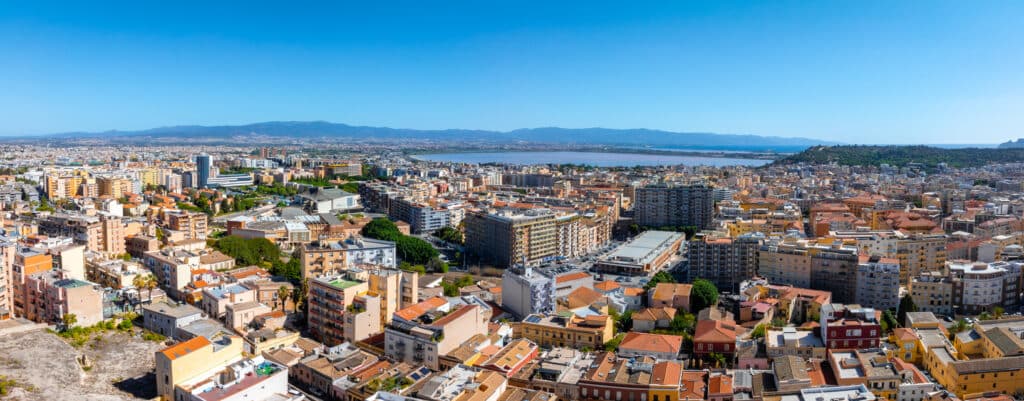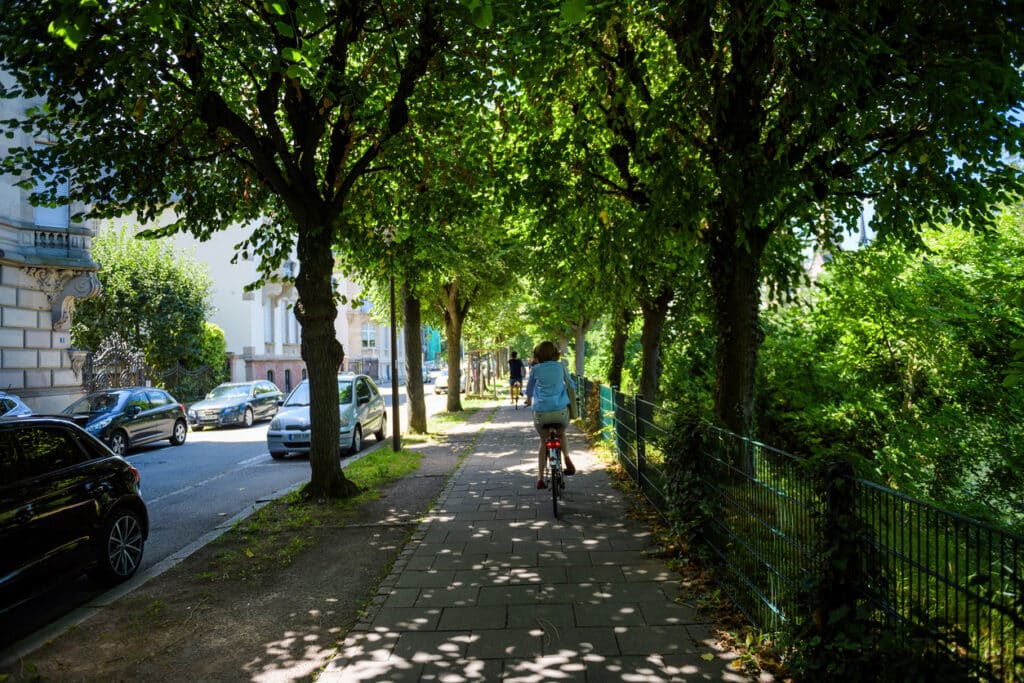Cities are suffering from tree decline — urban forests are getting smaller and tree canopies are sparser. Does climate change, one of the past decade’s largest looming threats, have anything to do with it? Here’s more on the relationship between urban deforestation and climate change and what restoring community tree canopies can look like.
The State of Today’s Urban Tree Canopies
Cities are rapidly losing their tree canopies worldwide, mainly due to urban development, improper planting practices, insects, diseases and tree removals across public and private spaces. Trees in urban spaces are also growing differently from their rural counterparts, with disparities in growth and climate sensitivity.
U.S. forests are losing one tree for every two trees established. At this rate, the country could potentially lose 8.3% of its urban tree cover by 2060 and there aren’t enough trees in cities for people to enjoy their benefits in the first place.
How Does Climate Change Affect Trees?
Tree planting and climate change are directly linked. Climate change affects deforestation in various ways, affecting entire ecosystems through droughts, pest outbreaks, rainfall pattern changes, wildfires and the expansion of invasive species. All these factors alter the forests, impacting tree canopies on multiple fronts.
Cellular Level
Like many plants, trees sustain themselves through photosynthesis, which uses carbon dioxide, light, water and other nutrients to create sugars for fuel and oxygen as a by-product.
Higher carbon dioxide levels due to climate change can, in theory, increase photosynthesis, helping trees grow more leaves. However, a lack of water and nutrients due to drought, pollution and other climate-related events reduces photosynthesis and kills trees.
Leaves cannot cool down adequately in high temperatures, leading to a phenomenon called photorespiration, where the tree uses oxygen instead of carbon dioxide. If these conditions continue, leaves could suffer from heat stress and lose their ability to use carbon dioxide.
Tree Level
The cellular effects of climate change extend to the tree as a whole. Increased carbon dioxide levels can initially improve leaf growth, creating thicker, denser urban canopies. However, once drought and irregular rainfall set in, these canopies can easily break down — prolonged seasons of extreme heat and little rain increase leaf mortality.
Furthermore, drier conditions and high temperatures increase the risk of wildfires, which can destroy acres of urban forests in one pass. In the U.S., lightning-started fires burned 2.1 million acres, and human-started fires burned 1.9 million acres during a 10-year time frame.
Ecosystem Level
An individual tree’s health determines its species’ survival. Different organisms support one another in an ecosystem. When one disappears, the entire habitat’s structure and function will change or even collapse. Animals, birds and insects might lose a source of food or shelter, creating gaps in the ecosystem that affect all its parts.
Global Level
Global warming is changing trees’ growing seasons and ideal geographical areas, leading to some species dying out and others thriving. Recent research shows 29.9% of tree species are under threat of extinction. According to scientists, this could lead to substantial losses in other plants and animals. It will also significantly alter the world’s carbon, water and nutrient cycles, essential for sustaining life.
The Importance of Trees in Urban Spaces
Urban spaces consist primarily of human-made infrastructure, meaning every acre of tree canopy is precious. Trees not only make cities more eco-friendly, but they also increase property value and leave a legacy generations to come will enjoy. Here are four ways trees contribute to the environment and quality of life in urban areas.
1. Temperature Regulation
High temperatures are a chronic problem in many cities, especially in the summer. The expansion of built environments can lead to a more intense urban heat island (UHI) effect, where metropolitan areas are significantly warmer than surrounding rural areas.
More than being uncomfortable, extreme heat in cities can be deadly. A recent study in The Lancet Medical Journal estimates increasing urban tree coverage could reduce the number of premature deaths attributed to the UHI effect.
Tree canopies provide shade, cool urban spaces and protect residents from extreme heat. They also act as windbreakers in cold weather. Their ability to regulate temperatures reduces energy consumption on air conditioning and heaters, leading to lower utility costs.
2. Carbon Sequestration
How do trees help reduce global warming? Carbon dioxide is a greenhouse gas — it absorbs and radiates heat, leading to higher world temperatures. Trees naturally absorb carbon dioxide during photosynthesis, making them a natural carbon sequestration solution to mitigate climate change. Healthy forest canopies with many trees naturally sequester more carbon and reduce the amount of greenhouse gases in the atmosphere.
3. Water Filtration and Retention
Trees have extensive root networks, especially when planted together in urban forests. These roots intercept and absorb rainwater, acting as natural sponges that hold the soil together and prevent excess water runoff. Trees can absorb 10-150 gallons of water every day, making them incredibly helpful in reducing flooding.
4. Biodiversity Support
Trees provide food and shelter for various species, including animals, insects and fungi. They are especially important in urban areas, where they are the main habitat for a large portion of a city or town’s biodiversity. Biodiversity is crucial to maintaining essential functions and components of an ecosystem, such as soil fertility, water regulation, pest control and pollination. Urban tree canopies help keep habitats alive and thriving.
Restoring the Urban Canopy
There is still time to restore urban tree canopies. Here are three strategies local governments and environmental organizations can consider to aid restoration initiatives.
1. Urban Forest Planning
Urban planning and climate change control go hand in hand. Rebuilding tree canopies requires comprehensive plans that include reforestation efforts in strategic areas. Take green roofs, for example. These structures allow cities to create canopies even with a limited land area and enjoy benefits such as cooler temperatures and insulation.
2. Government Support
Local policies and government support strengthen campaigns to revive urban tree canopies. Advocate for laws and ordinances supporting reforestation and biodiversity conservation efforts, such as tree planting initiatives, urban gardening and park development.
3. Planned Species Selection
Effective reforestation requires careful planning, especially regarding the tree species you want to work with. This practice is especially important in cities, where trees often need to share spaces with residents, traffic, buildings and other urban infrastructure. Proper selection and placement are crucial to ensure they thrive and support additional species in the ecosystem.
Planting Urban Tree Resilience
The degradation of urban tree canopies involves many factors, a significant one being the changing, warming climate. Inaction will lead to further decline, affecting entire ecosystems worldwide.
Reversing this trend requires urgent and proactive initiatives from governments and communities. Restoring the urban canopy is possible with the right actions to protect today’s populations and build greener, more resilient cities for future generations.
Source link
Rose Morrison biofriendlyplanet.com



